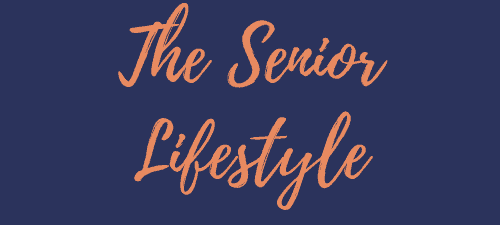Nevertheless, she persisted and had a garage full of her creations. Some were beautiful, some practical and useful, and others were just a little weird, all true manifestations of her prolific imagination. There were little creatures she called “whimsies,” each with their own distinct soul and personality.
One of the most important benefits of creativity would be enhanced cognitive function followed by psychological and physiological healing. The act of creation can reduce depression and allay anxiety, two conditions common to the elderly. There are numerous other positives when it comes to the creation of any work of art.
What drives us to want to create? 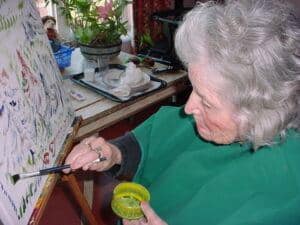
Seniors and Art go together. At a time when our runway is shortened, we finally have time to explore our creative impulses. There can be an urgency to use our remaining years to express ourselves, validate our feelings, act out, and be heard. We want to make our mark while we still can. Unlived potential” is about to get real.
For many, that inner, authentic self, long ignored, is now being dusted off and rediscovered. Creating can become compelling because not since childhood have we had so much freedom to explore our inner life. We have decades of experience and observations to integrate into some art form. Now, we can indulge that nagging muse, and acts of creativity and self-expression can hold sway.
Universal themes are explored
Themes are things that bridge our humanity’s universal experiences and concerns, our love of beautiful things, and our horror of man’s depravity. Life’s conditions are universal no matter who we are or where we live. People everywhere and anywhere paint to express those themes. Some compose poetry. Others write fiction. Sculptors sculpt, and musicians compose music. A compelling need to express drives all works of art. A mysterious muse, or call it energy, is urging us to give expression to a very personal interpretation of the world around us.
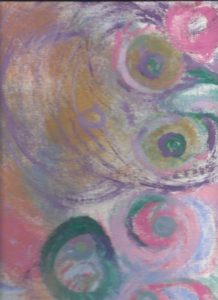
What happens when we create?
Self-esteem is enhanced through creative expression. We create something from nothing, and we become builders. In so doing, we feel engaged and authentic. A blank piece of paper fills with words and becomes a poem or the beginning of a novel. A canvas is flooded with colors and shapes. A lump of wet clay is molded into something tangible, possibly useful, maybe even beautiful. Problem-solving and motor skills are tested. Our mind is active, and we are focused.
There is an energy in waiting within us that demands attention when we have a creative impulse. Responding to that impulse alleviates any boredom in our lives and relieves the stress created by that nagging muse. It can be a catharsis. What was once an inner intangible impulse has now materialized into something tangible.
Feelings difficult to articulate can be expressed through art, and its interpretation is left to the audience. We take away from any work of art whatever speaks to us.
A close friend who was First Nations once told me that her band believed that if you were born with a talent, which was interpreted as a gift…and you did not use that gift, it would turn its energy against you. In other words, there was a belief that any talent was energy waiting to make itself seen or heard. Others might say that creativity is intelligence having fun.
Where do we join an artistic community? 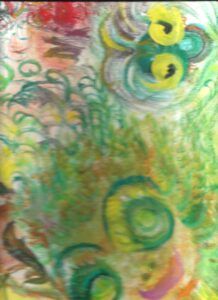
So what do we do with our creative juices? Today, information on becoming a member of any arts community is available with a click of the mouse on Google, Facebook..or Linked In.
In addition, many courses are now available online, making art education available to those living in rural areas. You no longer have to live in a major urban center in order to become involved and educate yourself. That said, my personal preference is to socialize and learn in a group setting where everyone shares their experience and learns from one another.
The importance of art is now being recognized by the enlightened administers of Seniors’ Centres, Retirement Residences and long-term Care Nursing Homes. Not many seniors are inspired by attending a Doughnut Social, as is so well expressed by Tim Carpenter, founder of EngAge, who advocates for Thriving as we Age:
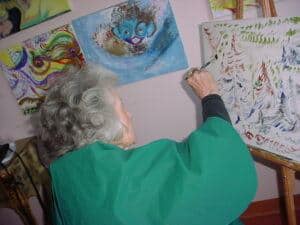 Art is something we can engage in over a lifetime
Art is something we can engage in over a lifetime
My Mother resided in long-term care for the last 11 years of her life, where she explored her art. Into her mid-90s and having survived a serious head injury, cognitive issues rendered her creations childlike. Nevertheless, they were colorful, whimsical and filled the walls of her room, making it undeniably and uniquely hers.
Pablo Diego José Francisco de Paula Juan Nepomuceno María de los Remedios Cipriano de la Santísima Trinidad Ruiz y Picasso – also known as Pablo Picasso, created art until his death at age 91. Apparently, retirement from art and creation was not a part of his life plan.
And Einstein, who died at 76 years of age, expressed that had he not become a physicist, he would have pursued music studies and become a musician.
Each artistic endeavor has something to offer its practitioners. Art is an exploration drawing on one’s past, present, and aspirational future. It is a freedom zone – a completely other reality, an expression completely unique to the artist. Here are a few examples of the benefits of art:
- Music improves connectivity in our brain
- , the acting profession, with its emphasis on memory, and improves word search and listening recall.
- Writing is therapy, and journalling about trauma apparently improves one’s immune system.
- The same holds true for listening to music. From Medical News Today, in an article by Maria Cohut, Ph.D., Ms. Cohut states “… music may help to restore effective functioning in the immune system partly via the actions of the amygdala and hypothalamus. These brain regions are implicated in mood regulation and hormonal processes, as well as in the body’s inflammatory response.”
- Dance is promoted as not only a pleasurable way to move but one which can enhance physical fitness. My Mother at 93 was still a Zumba enthusiast, wearing her signature earrings and dancing along with the younger seniors while unknowingly benefiting from decreasing her blood pressure and triglyceride levels.
The benefits of art for seniors are overwhelmingly positive: engagement with life, socializing with others, improved well-being, psychological and physiological healing. Not to mention a reduction in depression and anxiety.
When it comes to holistic health, one might rightly assume that creative endeavors are on par with pharmaceutical interventions without the side effects.
